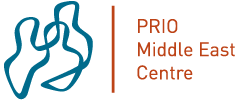Abstract: There is a large pool of rigorous empirical studies investigating the relationship between ethnic heterogeneity and armed conflict. A general finding from these studies is that ethnicity matters, although not as much as portrayed in popular media. But a largely neglected aspect of these quantitative studies is how changes in the relative strength of groups affect conflict. Monica Duffy Toft (2002) argues that differential growth may destabilize heterogeneous democracies internally. In democratic societies, political power is distributed according to popular support in elections. A changing balance between groups may thus alter the distribution of power and potentially lead to political instability and ultimately violent conflict. Parties to the conflict may engage in activities ranging from preferential treatment of one ethnic group to ethnic cleansing to ensure their relative base of support. Bookman (1997) claims that political leaders attempt to increase the size of their ethnic group in order to gain or consolidate power, and that this undermines prospects for inter-group cooperation. There have been several case studies arguing for the important role of differential growth in conflicts in states like Lebanon, Bosnia, Northern Ireland and Palestine. Weiner & Teitelbaum (2001) conclude that over the past years, many episodes of violent conflict seem to be driven in part by competitive fears resulting from compositional shifts. In a cross-national time-series study, this paper investigates whether differential growth appears to make states more prone to political violence such as civil war and rioting. It further explores the role of regime type and political institutions in this nexus.
Urdal, Henrik & Håvard Strand (2005) Differential Growth, Political Instability and Violent Conflict, presented at the 46th Annual Convention of the International Studies Association, 1-5 March.







